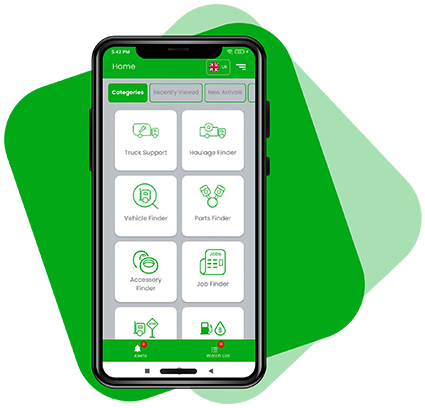How Do HGV Class 1 Drivers Maintain Accurate Driving Logs and Records?
Maintaining precise driving logs and records
is a crucial responsibility for HGV Class 1 drivers. Here's how they ensure
accuracy and compliance:
- Utilize
Digital Tachographs: Modern HGVs are equipped with digital
tachographs that automatically record driving hours, rest periods, and
speed. These devices help drivers consistently track their activities
without manual input errors.
- Adhere
to Regulations: Drivers have a strong grasp of
commercial driving regulations, such as the EU Working Time Directive and
UK Domestic Rules. This knowledge ensures that logs reflect legal working
hours and break requirements.
- Regular
Updates: Drivers frequently update their logs
during rest stops or at the end of their shifts. This habit prevents
discrepancies and helps maintain a seamless record of daily activities.
- Cross-Verification: Many
drivers use electronic logbook apps to cross-check data collected by
tachographs. These apps provide a platform for spotting inconsistencies
between manual and automatic records.
- Training
and Best Practices: Continuous training sessions offer
drivers updates on the latest regulatory changes and best practices for
logging their hours accurately. This proactive approach minimizes errors
and enhances compliance.
In the UK, HGV Class 1 drivers maintain
accurate driving logs and records to ensure compliance with legal driving time
limits and rest requirements, which are strictly regulated under EU and UK law.
Here are the key methods they use:
1. Digital
Tachographs
- Recording
Hours: Digital tachographs are required in all
HGV vehicles registered after May 2006. These devices record driving time,
rest periods, speed, and distance traveled, providing an automatic and
precise log of driver activity.
- Data
Storage: Data from digital tachographs is stored
in both the device itself and on a driver’s smart card, which they must
insert at the beginning of their shift. This card holds 28 days of driving
information.
- Downloading
Data: Employers are legally required to
download the tachograph data at least once every 28 days for driver cards
and every 90 days for the vehicle units. This data is used to ensure
compliance with driving hour regulations and to manage work patterns.
2. Manual
Records
- Completing
Manual Entries: If a driver forgets to insert their
tachograph card, they must complete a “manual entry” at the start of their
shift, detailing driving and non-driving activities. Manual entries are
also used if a tachograph is faulty.
- Recording
Breaks and Activities: Drivers manually record their
activities, such as breaks, rest, and other work-related tasks, especially
if these don’t align with the automatic records on the tachograph.
3. Driver
Logbooks (in Case of Tachograph Failure)
- Paper
Logbooks: Although rarely used due to the
predominance of digital tachographs, paper logbooks can be utilized in the
event of a tachograph failure. Drivers are then required to manually log
hours, breaks, and rest periods until the tachograph is repaired.
- Detailed
Entries: Logbooks require drivers to enter
details including start and stop times, mileage, rest periods, and other
off-duty time, ensuring that their working hours are accurately documented
even without digital tracking.
4. Compliance
Software and Apps
- Fleet
Management Systems: Many logistics companies use fleet
management software that interfaces with digital tachographs to provide
real-time data on driver hours, location, and rest requirements. This
software helps both drivers and employers stay compliant with legal
requirements.
- Mobile
Apps: Apps like Trucklogics and Fleet
Complete allow drivers to log their hours, monitor compliance, and access
driving records. These apps are especially helpful for remote tracking and
can provide reminders for breaks and daily driving limits.
5. Routine
Checks and Audits
- Employer
Audits: Companies are required by law to
routinely audit driving logs to ensure compliance with legal limits.
Non-compliance, whether intentional or accidental, can lead to penalties
for both the driver and the employer.
- Driver
Responsibility: Drivers are personally responsible for
ensuring the accuracy of their logs. Failure to comply can lead to fines,
penalties, or even disqualification from driving.
6. Record
Retention
- Driver
and Company Obligations: Employers must retain digital records
for at least one year, while drivers must retain their own tachograph
printouts and manual records for 28 days. These records may be reviewed
during audits by the Driver and Vehicle Standards Agency (DVSA).
By combining digital tracking, manual logs,
and compliance software, HGV Class 1 drivers and their employers maintain
thorough records, ensuring that all driving and rest requirements are met. This
system helps minimize fatigue-related risks, increase road safety, and ensure
regulatory compliance in the UK.


 Download our New App
Download our New App

